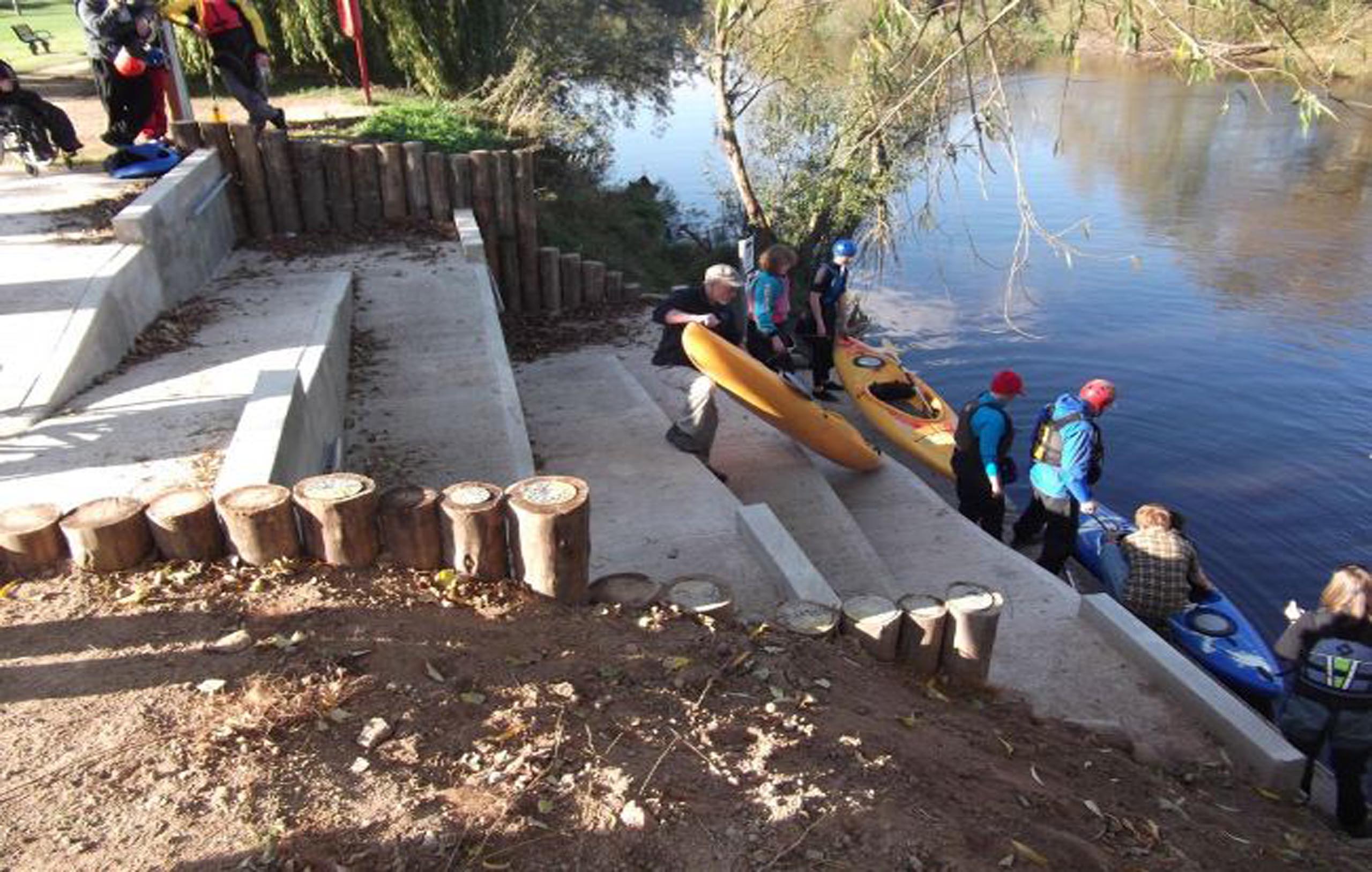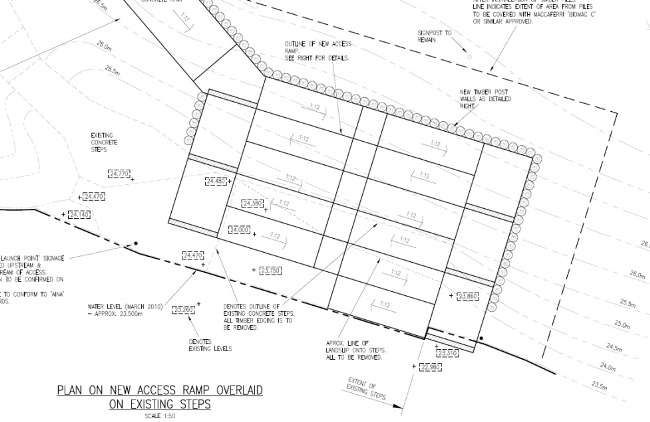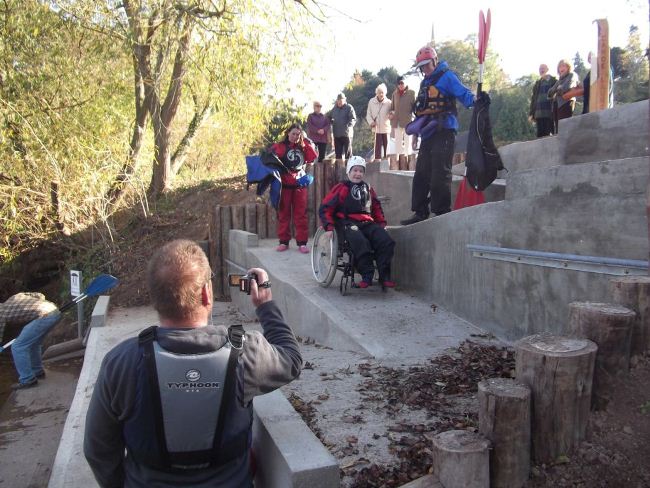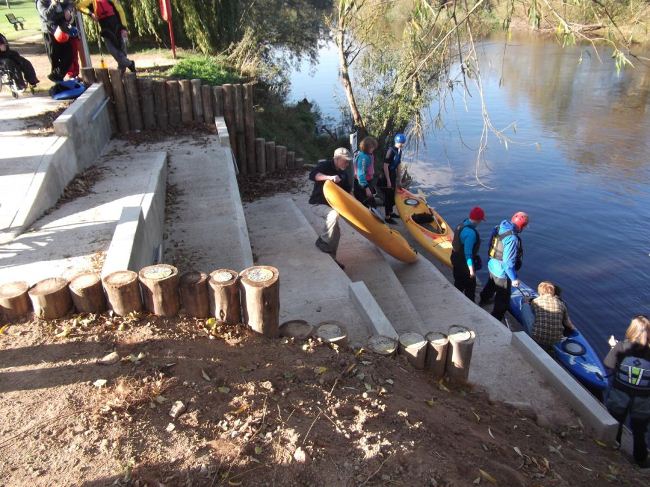River Wye access points
An innovative and forward looking proposal was developed by EPD to form a canoe trail on the River Wye, that was much more accessible to less able (on land) paddlers. Convention and the DDA Act had previously pushed designers to come up with a solution that firmly meets the rules. This leads to shallow gradient access ramps, large landings and handrailings. Put into the context of a major river bank with a height gain of 5m plus, to make it from waters edge to the top of a river bank at 1:12 gradient gives you an idea of how large a structure needs to be to comply with the “rules”. Previously any attempt at this at met with opposition from planners on aesthetics and also construction cost issues.
EPD along with the BCU, with the support of the AONB on the River Wye, went back to first principles and looked at who could really benefit from access to the waters edge to go canoeing on a river trail downstream to another egress point.
The conclusion was that not everybody that could make it to the waters edge by a conventional set of ramps / access route could by enlarge actually, safely, go paddling on the river. Thus the term assisted disabled or “able to paddle with assistance to the waters edge” was derived. The needs of people capable of paddling were then examined.
A set of combined ramps / steps were then designed and assessed for suitability for this need. The central step arrangement allows conventional access down steps, with boats being dragged up and down as required, yet with the open ramps, assistance can be given from above and below for less able persons to reach the waters edge. No exposed handrailing is used and a slim unobtrusive guiderail is provided on the wall side of the ramps. The lack of any potential entrapment hazards at higher flows when the access point is in use is extremely important.





